Horecava: New trends 2020 - The African Influence

Enzo Sisto 29 december 2019
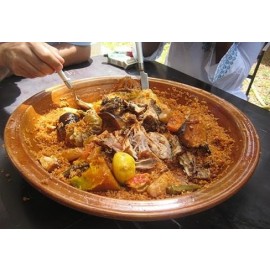
The attention to the vegan world is getting higher and higher, and not only with the fake meat that has just arrived in Europe: it seems that the gastronomic trend of the future is focused on conscious and responsible consumption. Little meat, lots of vegetables, lots of alternatives to dairy products: international buyers and experts from Whole Foods Market, an American food company bought by Amazon in 2017, reveal well in advance what the gastronomic trends of 2020 will be. There are meat surrogates, but we already knew that. And then vegan snacks, alternative meats but also flavors from West Africa: here will be the gastronomic trends of 2020.

We do not like to have a look on the so called "Meat surrogates". Impossible Burger, Beyond Meat... Fake meat, a substitute for plant-based meat, has been one of the most discussed topics of 2019, especially following the arrival of Beyond Meat in Europe. And it looks like we're going to hear about it in 2020, too.

This fad of meat surrogates will have a peak and rapid descent. A volatile fashion. Excellent marketing but nothing more. It will conquer a very small slice of recalcitrant vegetarian-vegan consumers. The Flexarians will try it for a while and will quickly forget it to return to the Mediterranean diet which has been vegan-vegetarian in 90% of its contents for over 3000 years.
One of the most interesting trend: the influence of African Gastronomy.

West African flavors will be between the most interesting influencers in 2020. Moringa, tamarind, sorgo, fonio, teff, millet: they are just some of the basic products of West African cuisine. A gastronomy that begins to intrigue chefs and enthusiasts, and that we will probably find more and more often among the menus of the locals. But let us have a look on the Africa cuisine in general.
This is a panorama about what the African Gastronomy could give us.
African cuisine is characterized by its intense flavor, aroma and strength. One of the most unknown cuisines but no less rich in nuances and flavors is African.
The large number of countries that make up this continent and the cultural differences between them, make us enjoy a variety of dishes that will surely delight food lovers of cuisine. The African continent is home to hundreds of different cultural and ethnic groups. This diversity is also reflected in the numerous local culinary traditions in terms of choice of ingredients, style of preparation and cooking techniques.
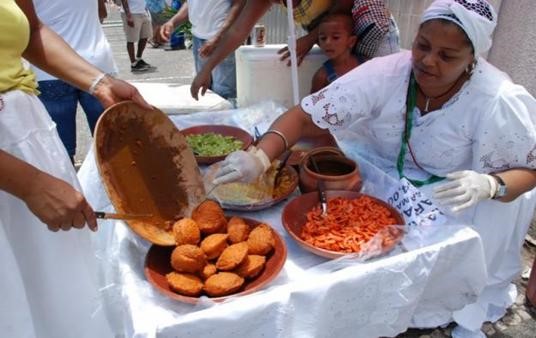
African Gastronomy is the set of arts and culinary customs of the peoples and ethnicities that make up the African continent. The continent of Africa is the second largest on earth and hosts hundreds of tribes, ethnicities and social groups. This diversity is also reflected in African cuisine,both in customs, as well as the ingredients used or the cooking techniques used. It has influences north of Mediterranean cuisine (it is an important part of Maghreb cuisine) and as a northwest of Arab and Turkish cuisines.
African food refers to any local cuisine prepared in the regions of Africa. The term is thought to refer to food prepared by African-born Americans, but it's really about the food that originates in the African peninsula. Throughout history, this food has undergone drastic changes due to changes in weather conditions on the continent, limiting the type of food people had available.
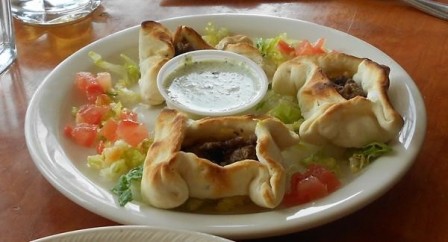
Traditionally, different african cuisines use a combination of locally available fruits, cereal and vegetable grains, as well as dairy products and meat. In some parts of the continent, the traditional diet has a preponderance of dairy, curd and serum products.
In much of tropical Africa, however, cow's milk is rare and cannot be produced locally (due to various diseases affecting livestock). Depending on the region, there are also sometimes very important differences in eating and drinking habits and trends across many populations on the continent: Central Africa, East Africa, the Horn of Africa, North Africa, South Africa and West Africa they each have their own dishes.
The basic ingredients are banana and cassava. Fufu-like starchy foods are served with grilled meat and sauces.
A variety of local ingredients are used during the preparation of other dishes such as spinach stew, cooked with tomato, peppers, chillies, onion sauté and peanut butter.
Cassava is also consumed as cooked vegetables.
Cooked peanuts are also prepared and supplemented with chicken, okra, ginger and other spices. Other favorites include bambara, a rice porridge, peanut butter and sugar, beef and chicken. Also game meat containing crocodiles, monkeys, antelopes and wild boars.
In Uganda, steamed green bananas are eaten, called matoke.
Among the traditional dishes in the horn of Africa is tsebhis (stews) served with injera, flatbread made of teff, wheat or sorgo, and hilbet,pasta made from legumes, mainly lentils and beans.
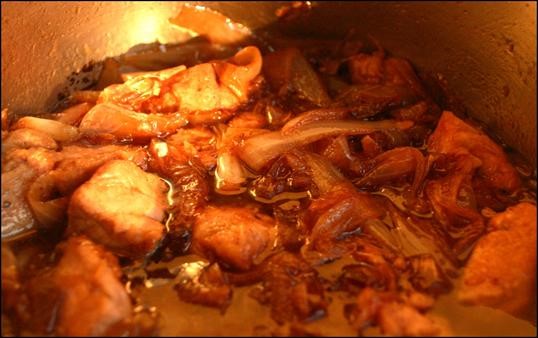
There are no fully African ingredients understood at the continental level, but some of them are said to be used in large regions. An example is okra that is frequently used in stews, the use of okras in other parts of the world is associated with the forced immigration of slaves from Africa: it is an example of Caribbean cuisine, Brazilian cuisine or the same of the southern United States.
The use of palm oil in the preparations of certain stews iswidespread, as well as the use of peanuts. Some travelers who toured Africa like Richard Francis Burton describe dishes like fufu, dubbed them the "essenceof African cuisine."
As a rule, the main meal of Africans consists of a mixture of vegetables, legumes and sometimes meat. In the field of meat is very popular the intake of Bushmeat (french: viande de brousse), a term that calls meat, used as food of any wild terrestrial animal. Hunting is one of the most characteristic elements. Beef, sheep and goat meat are too expensive for the inhabitants of Africa in general, which is why it is reserved for the holidays. In contrast, fish is abundant in coastal areas.
The combination of various foods is often called stew, soup or sauce depending on the region. The food mixture is usually served in a kind of porridge or puree made from roots of plants such as cassava or cereals such as corn, millet or even rice. Regional variations are reflected in the composition of a meal.
Cattle, both sheep and goats are held as a form of modern food and a warehouse of abundance, they are not generally consumed as food, they are usually eaten by-products.
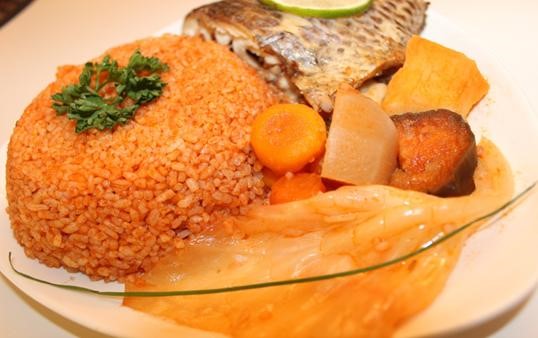
In some areas, milk and blood of cattle are consumed, but rarely meat. On the other hand, farmers grow a wide variety of both grains and vegetables.
Corn and cornmeal is the basis ofugali, the eastern African version of the West African fufu. Ugali is a dish made with starch and is served with meats or stews. In Uganda are famous bananas steamed, green called matoke provide starch to many meals.
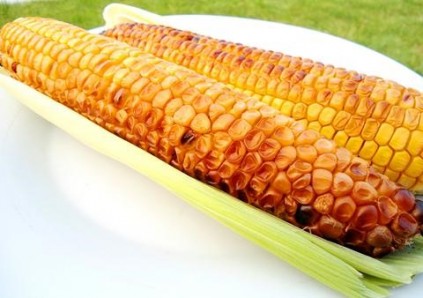
Native meat, spicy aromas and strength in the flavors are the dominant notes in this gastronomy.
African cuisine, tremendously influenced in the south by Eastern cultures and colonizing powers, is a cuisine with intense and spicy flavors, often becoming a volcanicly spicy meal.
Cooking with hot chili is common in most parts of the continent.
Among the many varieties that exist, the most common is the plump chili and pompous Scottish bonete and a really fiery one, the pili-pili. They make a particularly stimulating sauce, periperi sauce,which is used as aseasoning in many dishes.
Los chilies with garlic, jenjibre, black pepper, cardamom, nutmeg, ajowan and other spices are the ingredients of another magical combination, Berber Ethiopian sauce.
Oils
Oils are also relevant in African flavors, as well as softening the strength and hardness of African spiced flavors. Palm oil, characteristic of the western cuisine of the continent,gives a strong flavor and a shimmering reddish golden hue to the dishes. A typical meal with palm oil is Joloff rice, which is usually accompanied by onion and tomato rings.
In other regions the most commonly used oil is peanutoil. It is often used in stews to give flavor, or in the form of a snack. The small balls of crushed peanut paste are very popular, in addition to being a very nutritious snack.
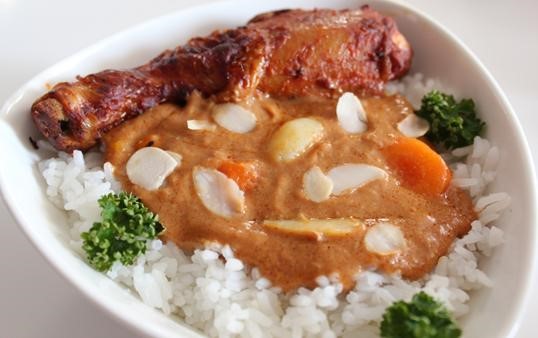
Cereals and other starches
If spices are the spirit of African cuisine, starches provide the "body". Grains, legumes, assorted roots, rice, cassave, yam or sweet potato provide consistency and basic nutrients.
Meats
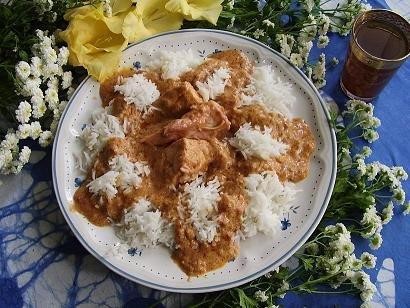
Meat and fish are the basis of food. Each country has its own traditional dish, and the meats used are from native species such as viper, camel, crocodile, ostrich and monkey, are some of the meats that would almost never be consumed in the Western world.
But universal pigs, chickens and cows are also used in African gastronomy. Chicken is usually made with coconut, ginger, green banana or peanuts. Beef or pork is browned with oil or stew and lamb is roasted. Exotic meat dishes include viper Ragout, Monkey Kebab, or Crocodile Tail.
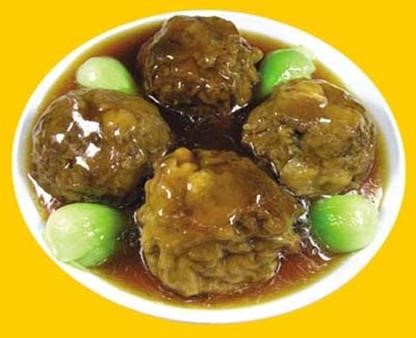
Fish
Cod in salad, crayfish and fried giant oysters, crab ragout with rice (Ago Glain), conger stuffed with chopped onion, parsley or red pepper (Tie Bou Dienie) are some of the typical dishes commonly consumed in this continent, with mile-lo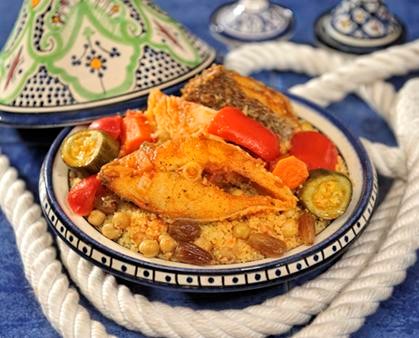 ng coastlines.
ng coastlines.
Gastronomic curiosities
Where else can I eat a crocodile or snake stew or a giant omelette for 15 people of ostrich egg? For a European, African food could become an extravagant and fantastic world. But in Africa the peculiar is normal and becomes a custom.
The typical meal consists of a single dish, stew with little meat and lots of oil, vegetables and spices, and the dough balls that they usually use as a tasty utensil to spread sauces.
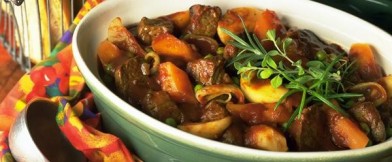
For dessert, fresh fruits such as ananas, mangoes, passion fruit or papaya. Fried bananas are also often eaten in pancakes or sweet potatoes that combined with coconuts are converted into cakes. Meal times are European, although their contents are exotic.
For dessert, fresh fruits such as ananas, mangoes, passion fruit or papaya. Fried bananas are also often eaten in pancakes or sweet potatoes that combined with coconuts are converted into cakes. Meal times are European, although their contents are exotic.
Drinks

It consumes a large number of alcoholic beverages such as Mengrohom, white drink made with corn and cassacon, Babine,product of fermentation of avocado leaves or varieties of beer such as millet.
As for non-alcoholic drinks, refreshing beverages with medicinal properties such as Kinkeliba infusion, lemon water and ginger,or drinks with honey and lime arecommon.
Influence of cultures on African cuisine
The first civilization to bring new ingredients to African gastronomy was Arabic. Arab merchants introduced from the north, through the Sahara, salt, spices and herbs. In the east, dhows, or small boats, reached the African shores full of mint, saffron, coriander, cloves and cinnamon.
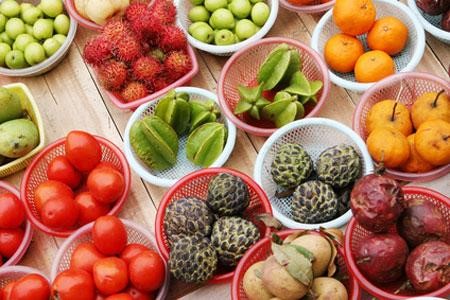
The Ottoman invasion of the North African part produced a very interesting regional tradition in the Maghreb.
Maghreb cuisines have in their northern most part typical characteristics of Mediterranean cuisine, while they are linked with some of the African cuisines. It has some influences of Turkish cuisine (with the exception of Moroccan cuisine) due to the expansion of the Ottoman Empire and that is why you can see the dolmas and the baclava in many of its regions.

Culinary colonization
Citrus, chili, corn and tomatoes came from the Portuguese from the 15th century onwards. Each colonizing nation deposited its grain of sand on African cuisine. The French with their snails and Great Britain with raspberries and asparagus added a touch of color to traditional African food.
A powerful influence during the colonizing process was that of Holland in South Africa. Coconuts, sweet potatoes, cinnamon cakes and flans and Koeksuster - sweet braids of dough that are fried and then immersed in well-sugared syrup - were the sweetest contributions the Netherlands made to that country.
Spanish cuisine
Spanish cuisine made its mark in the former colonies of Angola and Mozambique. The crunchy rolls that are eaten at breakfast and in dishes such as the goat cooked in Madeira wine in these countries today, are echoes of the past of the colonial mainland food.
Slavery
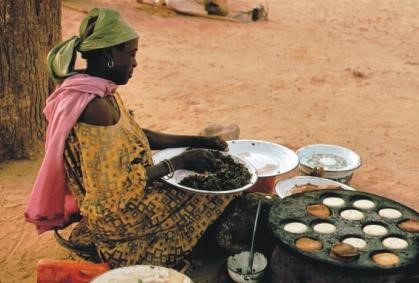
African menus incorporated Asian touches from the colonial experience of empires in eastern lands. The Netherlands and its Malaysian slaves were the inspiration for many African gastronomic curiosities. Pilaf rice, curry and samosas already remain as an edible legend of the British Empire of the Indies.
Culinary borders of Africa
There is a culinary frontier on the African continent, which divides less colonized Black or Central Africa; South Africa, more varied and influenced by colonial empires.
Black or Central Africa and South Africa
Its cuisine is little known as it has many ingredients of native character. Buffalo, zebra, camel, viper, monkey and even elephant, hippo or lion are consumed,which are now protectedspecies. As for fish, thiof, which is similar to turbot, capitaine or so-called manvi are the most consumed species in these regions.
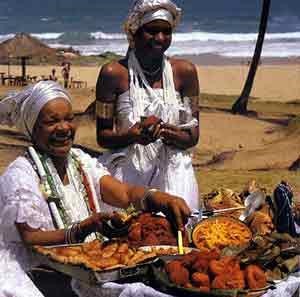
The traditional vegetables of this gastronomy are monkey bread, leaves of n'dole leaves, cassaca, shea nuts and sorgo. There are differences between the west and the east of that area. The cuisine of the west is more varied than that of the east, except Ethiopia, which has a rather sophisticated cuisine.
But in general it is a rustic kitchen. A fire made of wood and a saucepan are the basic instruments of this gastronomy. The most common dishes are Ragout and Canari (cooked dish without water in a clay pot). Raw vegetables and salads are unknown in these regions.
South Africa
His cuisine shows a wide variety of influences being an obligatory meeting point for sailors heading to the Indies: English, Dutch, German and Turks spiced the mixture. South Africans consume a lot of meat but seafood and fish are also common. Sosasite, a kind of lamb moruno skewer with spiced sauce, or the Biltong, savory snack or antelope spice or ostrich, are some of the most traditional dishes in this area.
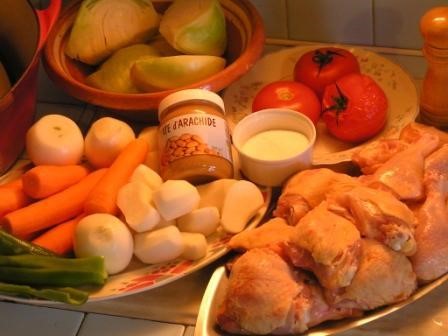
Influences of African Gastronomy
African cuisine has significantly influenced some areas of the planet due in part to the marketing and displacement of large masses of slaves to the different areas of America, thus having Puerto Rican cuisine, as well as the Caribbean in general. It is part of Brazil, Colombia, as well as the Gastronomy of the southern United States.
Want to know more about the African gastronomy? Keep following this blog.
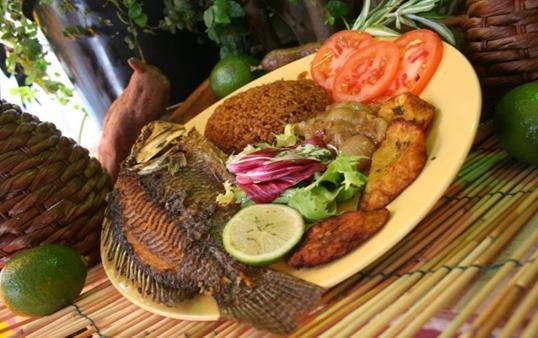
Gerelateerde blogs
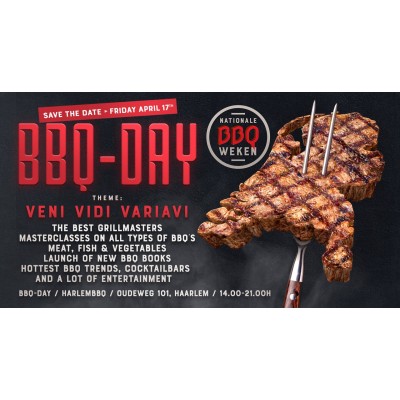
Kick Off Dutch Foundation National BBQ Weeks
Enzo Sisto 1 februari 2020
We will do it again! The Dutch Foundation for The National BBQ Weeks give a great party to open the seasons 2020 in an appropriate sparkling way.


Gallipoli Salento
Enzo Sisto 16 juli 2017
You can’t visit Salento without tasting a pasticciotto van Martinucci. This tasty cake based on cream, almonds, lemon is pure poetry. We have got it in Gallipoli.